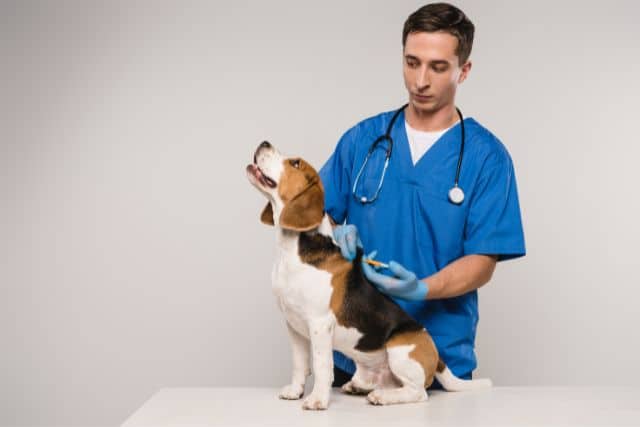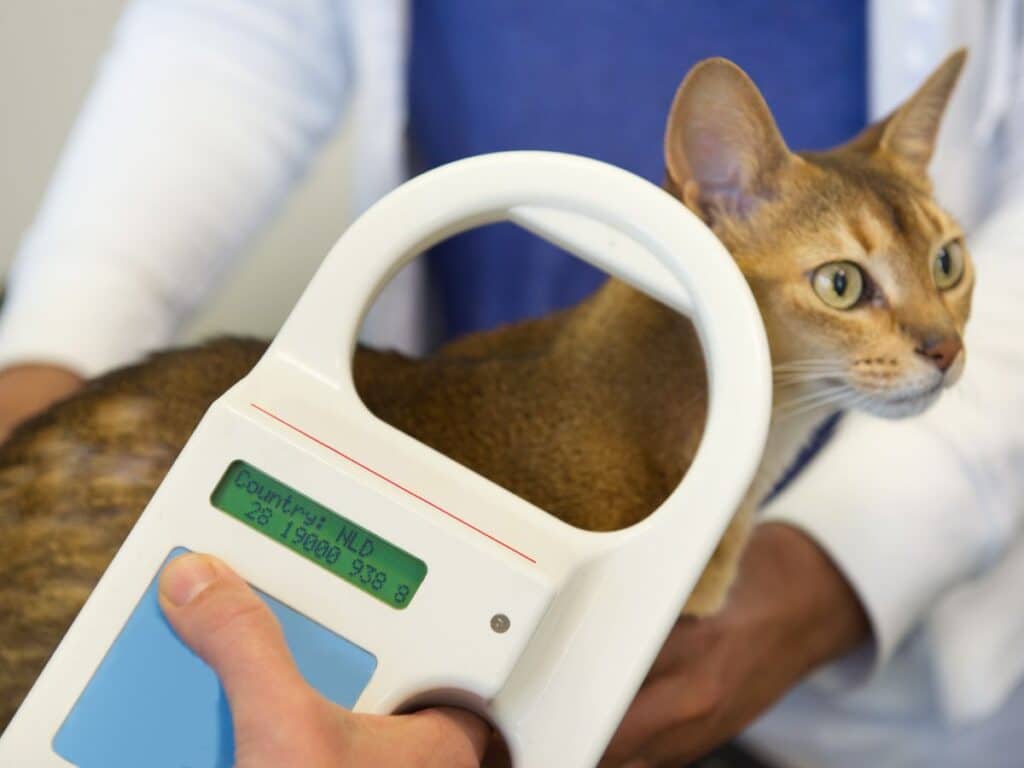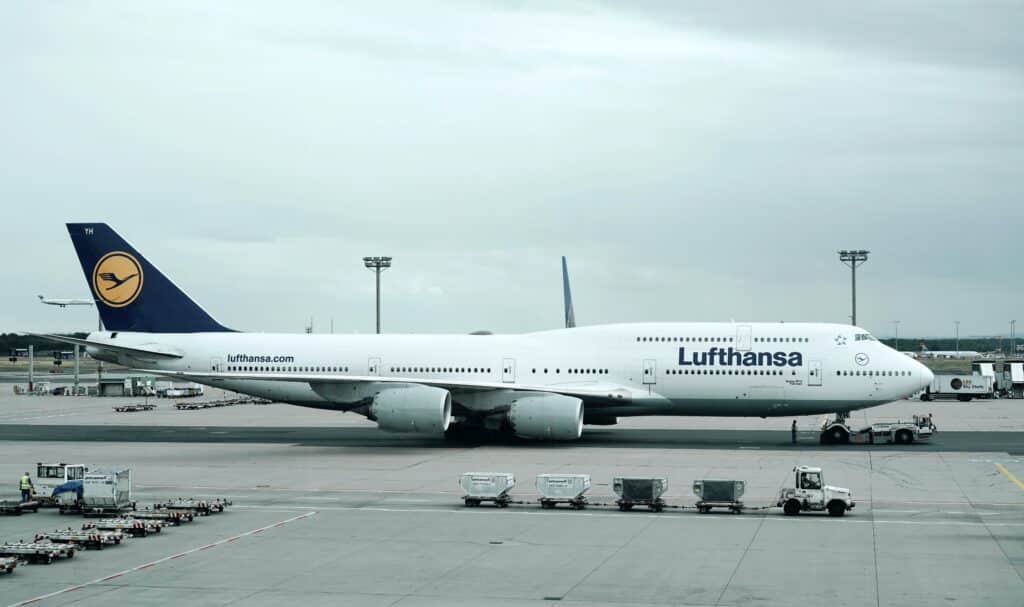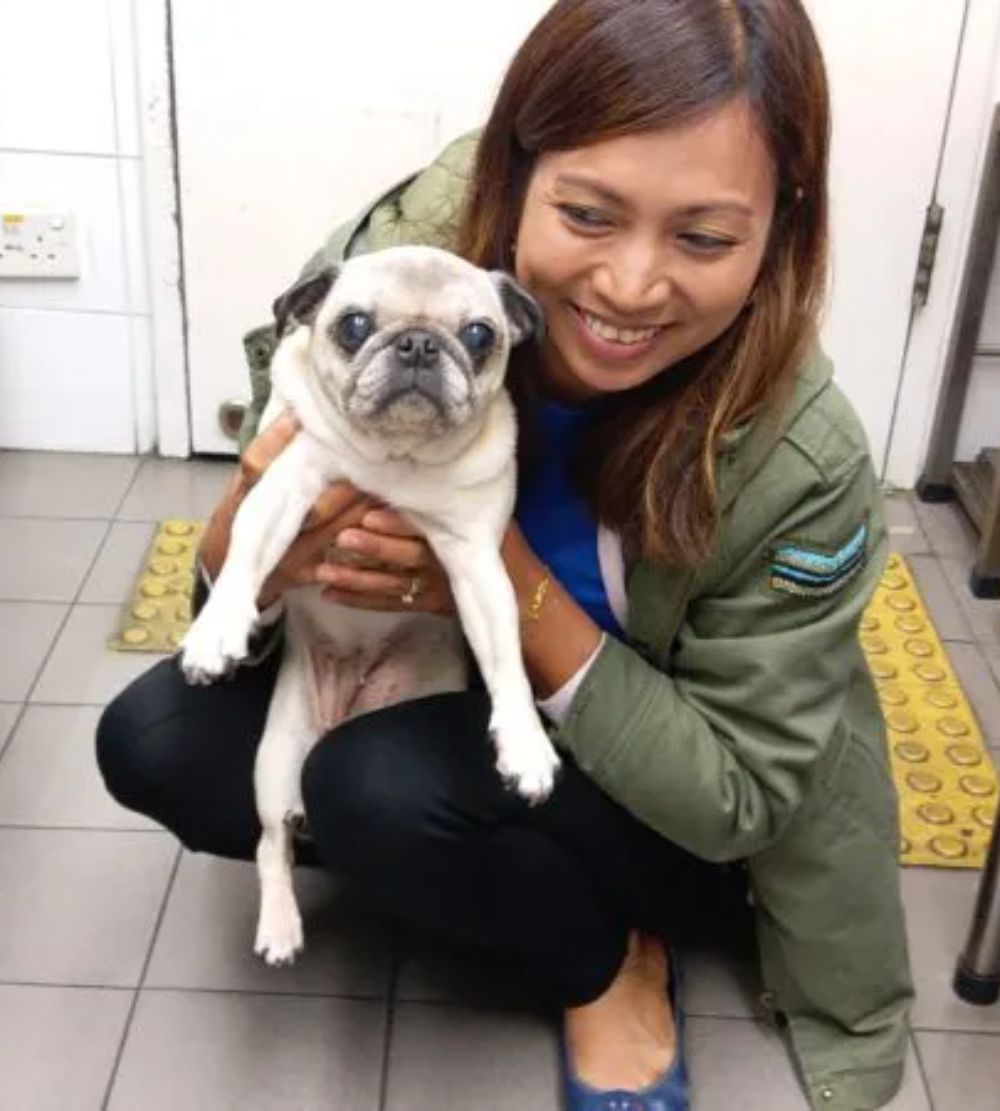Answer
There are many reasons why to use a pet travel agent. Whilst many things can be done by the owner, one must be aware that every country has different regulations. What might be required to say travel to the UK with pet from Hong Kong would be totally different if travelling from Macau to UK. Knowing to get the correct type of microchip, when implanted, dates of vaccinations administered, methods of flying etc., can be a huge minefield and a pet travel agent is there to assist and make sure the process is done correctly and your pet gets to its destination as smooth as possible. This can take all the hassle and stress out of the movement. Please note that one missing vaccination, permit, misspelt name, typo with vaccine batch numbers, incorrect crate size or breed declaration can mean refusal of travel or entry to a country.
Answer
This all depends on where the pet is going or coming from.
If coming to Hong Kong from a group 3 country, then there is mandatory 120 days quarantine at one of 2 government quarantine facilities. Please also be aware there is usually a 12-18 month wait for a quarantine space (longer for dogs) and there is no exemption. Please note that mainland China and Macau are amongst those group 3 countries. The list of group 1,2 & 3 countries can be found on the Hong Kong AFCD website.
If leaving from Hong Kong to other countries, then please check with the arrival countries requirements. UK, USA, EU, Japan, Singapore don’t require quarantine but some countries such as Australia, Taiwan, Malaysia, New Zealand amongst a few others do require a short quarantine stay of 7-10 days.
Answer
Once checked in at the airport, pets are initially kept in a separate air conditioned facility, usually a sound proofed room so various vehicles in the cargo warehouse don’t stress them.
They are treated as high priority and should be loaded onto the plane last, and then first to be unloaded. They are given water just before loading, or a large ice cube so as not to spill whilst loading and take off. Once the cargo holds doors on the aircraft are shut, there is no way to access till they are opened again after arriving at the destination.
The hold is kept at the correct pressure and temperature just as the passenger cabin is, and the captain will always be aware of animals in the hold.
Answer
No! Sedation is strictly not allowed by the airlines or recommended by vets.
Apart from the harmful effects that sedation can have on animals (drop of blood pressure for example), airlines want to see that the animal is healthy and well before they get checked in on a flight.
You can help with the anxiety with for example, some herbal sprays that can be used in the crate but owners should check with their vet first. You might want to trial it first to ensure your pet can tolerate the smell in a travel crate for a flight. Talk to our staff or a veterinarian for more specific and suitable advice for your pet.
Answer
Like any situation that is out of the norm, it is a stressful time for humans as well as pets. With all the checks, strange people, strange smells and noises, can be stressful for the pet but once the pet has gotten over the initial separation anxiety and they are loaded onto the aircraft, they then tend to have a very relaxed trip and as they can lie down flat and sleep, they almost always look better then their owners when getting off a long haul flight.
Answer
Depending on the country you fly to and the airline, you can take your pet as an additional piece of luggage. This is treated the same way as if you were taking a pair of skies, surfboard or other large items. This is by far the cheapest option for pets to travel with big cost savings, however not all countries accept this type of entry (UK, Hong Kong, Australia, New Zealand, UAE to name the popular destinations).
Just like any other baggage, if you don’t fly with it then the airline will not take. In this case, if you are travelling to one of those countries listed above or are unable to be on the same flight then we would have to send as manifest cargo (like sending a package with a courier service). Pets would travel in the same part of the aircraft but they would be processed via the cargo terminals and not the passenger terminals. Sending pets as manifest cargo has always been the more costly way of sending your pets and especially now during the covid pandemic.
We also made a chart on this here.
Answer
When sending as manifest cargo the Cargo rate is same all year around for pets so the flight cost will be the same to travel in what are thought to be "peak times" like School Holidays and Christmas time. Although your ticket price for personal flights can double at peak times, pets travelling Cargo and other regular cargo products are unaffected by this pricing changes.
During the covid pandemic, airlines have globally raised their cargo rates several times due to required revenue takings to make that route operational and make up for the shortfall of lack of fare paying passengers. With Hong Kong this is especially so due to mandatory quarantine and passenger numbers down by over 98% or more. With this, airline have raised their cargo rates significantly and with little warning, stop accepting pets altogether, or as in most cases, stopped flying from/to Hong Kong altogether.
Pet travel agents do charge surcharges for weekends and Public Holidays and night times for assistance with clearances or delivery, and some airport government customs departments do close at nights or weekends depending on the Airport.
Answer
Finding Out Pet's Microchip Number
[ez-toc]
If you're a pet parent wondering how to find your dog's microchip number, you've come to the right place. Microchips are an incredibly useful tool that has helped reunite copious amounts of pets and pet owners. They are like your pet's personal ID card, and they can be a lifeline if your dog gets lost or separated from you. But there's one important catch - you need to know how to find your dog's microchip number to make this technology work.
Knowing your pet’s microchip is registered with your up-to-date contact details could be the difference between a pet lost forever or not. Microchips are an essential part of pet relocation as they are the legal link between the pet and the documents, it's how we prove the paperwork relates to that individual pet.
How to Search for Your Dog's Microchip Number?
Searching for your dog's microchip number is an essential step to ensure your pet's safety and well-being. But in order to reunite with your lost pet, you need to find their unique microchip number. To find your pet’s microchip number, you can look at the following places including:
1. A certificate from the database in which your pet’s number is stored
When a veterinarian implants a microchip in your dog, they will register it with a pet recovery database that stores the unique identification number along with your contact information. This database stores your ownership information along with your pet's microchip number. This certificate is a confirmation that your pet's microchip is registered in their system.
2. Your vet’s records of your pet
If you ever lose or forget the microchip number, contacting your vet clinic can help you find your dog's microchip number. Vets often keep the unique identification number in their animal's medical records along with the microchip company and the date it was placed. Also, the vets will use microchip scanners to check your dog's microchip.
3. On your pet’s passport (if applicable)
Many countries, including EU countries, require dogs to have a microchip implant and a pet passport for international travel. This passport contains your dog's microchip number as part of their official identification information. So, if your dog has a passport, don't forget to store it in a safe place, as it can help you find your dog's microchip number.
4. On your pet’s insurance documents
Your pet's insurance documents can provide an easy way to find your dog's microchip number if needed. When you sign up for pet insurance, the company will likely request your dog's microchip number as part of their identification details. This 15-digit ID code will then be included on your insurance policy paperwork and in your pet's profile. So, if you are trying hard to search for your dog's microchip number, take a loook at the pet's documents e.g. vaccine card, licences, insurance etc, where the pet's microchip number will be recorded.
Remember there can be different types of Pet Microchips, for example in Hong Kong we have the AVID type that is linked to the Hong Kong dog license and is required to move to Hong Kong or keep a dog in Hong Kong. Also, there is the ISO chip or international microchip, used internationally.
What to Do If You Cannot Find Your Dog’s Microchip Number
Losing your dog's microchip number can be a stressful situation, but don't panic. If you have no luck finding your dog's microchip number through the above documents, then you can also do the following:
1. Contact the database that your pet's number is stored in
For this, you will usually need either names, addresses or phone numbers to search the database with. Make sure you use the information that would have been inputted when you first registered your pet's microchip.
2. Contact whoever carried out the procedure, if not your normal vet
If you don't remember where your pet was microchipped, contacting the vet or clinic that initially performed the procedure can provide a way to find your pet's microchip number. Even if it wasn't your regular vet who implanted the chip, the clinic should have documented your dog's unique microchip number in their records along with the registration details.
3. Take your pet to be scanned at your local vet, dog warden or rescue centre
If you can't find your pet's microchip number in any documents or veterinary records, you can take your pet to be scanned at a local vet, dog warden, or rescue centre. They can use a microchip scanner to detect if a microchip is present and read the unique 15-digit number. Hence, the microchip scanner is a big help in the process of your dog's microchip search.
How Does a Pet Microchip Scanner Work?
A pet microchip scanner is a handheld device designed to detect and read microchips implanted in pets. When scanning, it's positioned near the pet's neck to locate the microchip, which it can detect from a distance of 3 to 8 cm using radio frequency identification (RFID) technology.
The microchip itself is a passive RFID tag, meaning it's inactive within the animal and doesn't have its own power source. RFID technology operates through radio waves to transmit data. The scanner emits electromagnetic waves to energize the microchip. Once energized, the microchip responds by sending radio signals back to the scanner. The scanner then displays the unique identification number associated with the microchip, enabling pet identification.
Is There a Pet Microchip Scanner App?
No, you can't use a smartphone app to scan a pet's microchip. Microchips utilize NFC (near-frequency communication) technology, which requires a specialized chip reader or scanner to detect the implanted number. Therefore, you'll need assistance from a veterinarian or animal shelter to accurately scan a pet's microchip for identification purposes.
Updating Your Pet’s Microchip Details
Depending on the database your pet’s chip is registered to, you can usually search the pet's microchip number and see the contact information that is being held on it. You can then contact the database and ask for your details to be updated. Beware, this may come at a cost. Checking and regularly updating your pet’s microchip details is an extremely important habit to get into and really does make the difference to being reunited with your pet if it is ever to go missing.
In Hong Kong, the only real database is the AFCD record of microchips, which need to be correct and up to date for export.
Conclusion
As a pet relocation company, we understand the importance of having your pet's microchip number readily available. Your dog's microchip is a great help for identifying and reuniting with them if they ever become lost. We hope this article has helped you how to find your dog's microchip number.
At Ferndale Kennels and Cattery, we also can help with pet microchip services, travel vet services, and full door-to-door shipping services. Feel free to phone us at +85227919330 or email us for any further explanations.
Click Here For Shipping Enquiry
Frequently Asked Questions
[faq_schemas]
Answer
Flying Dogs & Cats to Australia with Private Jet
Normally all pet dogs and cats destined to Australia must travel as manifest cargo (i.e. in a commercial airline as Cargo, not as excess baggage) in a crate for biosecurity and traceability reasons. This is also an Australian Civil Aviation Safety Authority requirement for all aircraft that fly into and through Australian airspace.
It is possible to import pets to Australia via private jet into Melbourne, but please note this requires very special arrangements with the Post Entry Quarantine (PEQ) facility whose staff will attend the airport, remove the animal from the aircraft in its crate and take it to the Australian Quarantine facility where they must still stay for 10 days.
This also does not alter all the necessary preparations, testing, vaccinations, treatments and examinations required before the animals are eligible for export to Australia as per the conditions of the Australian Government import permits and depending on the country of departure.
Hong Kong is categorized as Group 3, contact us for assistance planning your move to Australia.
Answer
The Cargo rate is same all year around for pets so the flight cost will be the same to travel in what are thought to be "peak times" like School Holidays and Christmas time. Although your ticket price for personal flights can double at peak times, pets travelling Cargo are unaffected by this pricing changes.
The only way pet flight prices would rise would be if the airline is increasing their cost , can happen on an approximately annual basis.
Pet travel agents do charge surcharges for weekends and Public Holidays and night times for assistance with clearances or delivery, and some airport government customs departments do close at nights or weekends depending on the Airport.
Answer
Q: We are flying our dog as excess baggage, very concerned about the heat and are specifically wondering what will happen with our dog once we are checked in (ie. will you be with him from check-in until loading into the aircraft)? I am worried about our pet being left in the heat for the prior hours before and his water bowl being empty from being moved around.
A: Please note that when flying with your pet as excess baggage, they will remain in the passenger terminal, with AC until the very last moment when they get loaded, they are not left in the outside heat. Our staff wait with him until the airline staff take him down to the planes perhaps one hour before flight. Also the water bottles with the cage will give a constant supply of water.
He will be in the cargo hold, so there wouldn’t be anyone there with him during the flight.
If flying excess baggage then they stay in the check in counter area till shortly before boarding where they are taken straight directly to the aircraft for loading and are the last ones to be loaded and then the first to be taken off at the other side. You collect him from the oversize baggage counter in the destination country.
Answer
Relocating overseas, whether by choice or for work, is a big decision that requires quite a lot of forethought and planning. Things get even more complicated when you have furry friends to take with you. Moving with pets internationally is a lot tougher than moving with them domestically, and it’s stressful for both humans and their pets.
The good news is that if you do your research (which you’re doing now) and plan properly, you should be able to make it easier for both yourself and your beloved pet. If the thought of quarantine is something that concerns, then learning what is required and following the rules is the first step to easing your mind.
There are countries that require quarantine no matter what. However, in some cases they will waive or reduce quarantine time if your paperwork is in order. Therefore, it’s certainly worth ensuring that all your documentation is ready.
Here’s what you need to know about the quarantine requirements
The rabies-status of each country
Quarantine gives officials a chance to look for numerous health problems, but rabies is the biggest concern that drives quarantine requirements.
Every country in the world has been split into three categories relating to rabies; rabies-free countries, rabies-controlled countries and high-rabies countries. Before you relocate your pet internationally, you need to be aware of the rabies-status of your furry friends origin country, along with the destination country.
The rabies-status information can get quite complicated, but we will try to summarize it for you here:
- Rabies-free country to just about any other country: they can enter without quarantine and minimal paperwork.
- Rabies-controlled country to another rabies-controlled country: there may be certain requirements, such as; current rabies vaccinations, your pet should be microchipped, and you may need an import permit for entry.
- Rabies-controlled country to EU country: A pet-microchip is required for all EU countries. You will also need a veterinary certificate, current rabies vaccinations, and sometimes tapeworm treatment certificates.
- Rabies-controlled country to high-rabies country: Paperwork is minimum and you will probably just need the correct pet passport and occasionally an import permit.
- High-rabies country to rabies-controlled country: A blood titer test will usually be required and your fur baby should have a microchip.
- High-rabies country to high rabies country: Pet passport forms are required and maybe an import permit.
- High-rabies country to rabies-free country: There are some countries that do not permit pets from high-rabies countries. Others may require blood titer tests to prevent quarantine. But, there are a few countries that make quarantine mandatory, even if your pet is coming from a rabies-free destination.
Countries that quarantine pets on arrival usually require proof of a rabies vaccine performed at least six months before they arrive. Even countries that don’t have a mandatory quarantine period need a health certificate and rabies vaccination certificates.
Country specific quarantine
Many countries have strict regulations pertaining to international pet travel. No matter where you’re going, you should contact the embassy of that country to confirm pet travel regulations and quarantine rules.
Here’s an overview of the requirements for some of the most popular countries that travelers relocate to with pets:
- Canada: Cats and dogs can come into Canada for any period of time without quarantine from any country. However there are a few requirements and exceptions (rabies-status being one of them).
- Australia: There is a list of rules and regulations for pet travel to Australia. When your pet arrives in Australia, they will immediately be taken to the Quarantine at Mickleham Facility. The quarantine period is for a minimum of 10 days.
- New Zealand: Cats and dogs can be imported only from approved countries. If arriving from any country other than Australia, you'll need an import permit and your pet will be quarantined for a minimum of 10 days.
- United Kingdom: All pet dogs and cats can come into the UK from any country in the world without quarantine if they are in line with the rules of the Pet Travel Scheme (PETS).
Research import requirements
Different countries have different rules and requirements, and therefore you will need to research the import requirements through the Ministry of Agriculture of the country to which you’re moving to find out if quarantine is necessary.
If quarantine is required, you will want to find out as much as you can about procedures and the facility to ensure that you have all necessary documentation in place. This will help to avoid any issues and subsequent delays in having your pet released.
Each country incorporates its own rules with regard to live imports. These are aimed at keeping diseases and invasive species out. All countries need basic vaccination certificates and formal proof that your pet is in good health.
Other things to consider
If your pet has a layover that exceed 2 hours or will be changing airlines, you need to consider quarantine requirements of countries in which they must clear customs. There may be additional requirements in these countries.
Also, keep in mind that quarantine rules and regulations can change at any time. So always make sure that you are working with the most up-to-date information.
Answer
Moving to a new country and wondering about the process involved in having your furry friend fly with you? Driving with a pet in the car can be stressful enough. So the thought of your pet boarding an aircraft might sound like a nightmare. But, of course, often you don’t have much of a choice because the thought of leaving a beloved four-legged friend behind is not even an option.
These days, most commercial airlines allow passengers to fly with their pets. This is great news for all the fur-baby parents out there who are moving counties, and naturally, taking their pets with them. However, pets aren’t people, and therefore they have a very different flying experience. Even if your sassy little cat were capable of appreciating the amenities of a first-class ticket, they wouldn’t be eligible.
They may be treated like royalty in your home, but onboard an aircraft there are typically two categories that they will fall into: Carry-on baggage (cabin) or cargo. Below we will take a closer look at each of these options. Keep in mind that every airline is different and may have different requirements. But, for the most part, the general concept will be the same.
Carry-on Baggage (Cabin)
Firstly, you will need to figure out if your pet is small enough to fit under an airplane seat. Some airlines allow pets to travel in cabins if they are small. So if you have a large dog, they will need to fly in cargo luggage.
Most airlines allow passengers to travel with small pets tucked away inside a carrier, and under the seat in front of them. Size and weight restrictions vary between airlines, but most stipulate that together your pet and carrier should not exceed 20 pounds in weight. The other requirement is that the carrier fits under the space in front of you.
It’s also important to note that there are some restrictions in place regarding breed and age. Many airlines don’t allow puppies that are younger than eight weeks to fly in-cabin. In addition, some airlines don’t allow short-nosed dogs to fly because of the increased risk of respiratory problems. However, sometimes short-nosed dogs are only restricted from flying in-cargo, but can fly in-cabin. So it’s important to check these requirements with the relevant airline.
Cargo
Most airlines allow passengers to ship their pets as cargo year-round in climate controlled sections. Cargo hold specifications may vary between airlines, but pilots are able to change the temperature according to the type of “load” and any items that may be sensitive to temperature, like your beloved furry-friend. However, there are often restrictions in place for extreme hot and cold weather conditions. This is because even though the cargo section may be temperature-controlled, other parts of the terminal might not be.
Despite what many people think, pets are not confined with luggage in a dingy dark hole at the bottom of a plane. Your pet will be securely loaded into the cargo area, but their crate will be placed in a separate area, away from the rest of the luggage. Baggage handlers often strap animal crates in place and typically wrap them with perforated air cushion rolls. Also, they get loaded onto the plane last and come off first.
While storing your pet in cargo may be a terrifying thought, it’s really not as bad as you imagine. Some great ways to prepare your fur-baby for the experience is by introducing them to the cargo crate as soon as possible, ensure that they are hydrated (water is very important), and fill the crate with toys and blankets to make them feel comfortable.
Other things to consider
Sometimes airlines restrict the number of pets that they allow onto an aircraft at any one time. This is why it’s very important to book and pay for your pets ticket as far in advance as possible.
It’s also important to go carrier shopping and ensure that you get a carrier that will offer your pet the most comfort, but also complies with airlines rules. There are many different types around so you can shop around to see which one will work best for you.
Lastly, sit back, relax, and enjoy the flight. Remember that airline employees who handle your precious cargo are highly trained and they are often animal-lovers who take your pets safety very seriously.
Answer
For many pet owners, the idea of placing their furry companion in a carrier and sending them into the cargo hold is not comforting. Traveling with pets, especially on international flights, can be stressful and complicated. Concerns about safety and separation often add to the anxiety. Fortunately, several pet-friendly airlines allow small pets, within specific size and weight limits, to travel in the cabin with their owners. This is a safer and more comfortable option for both pets and their humans.
With an increasing number of airlines offering in-cabin pet travel, we have compiled a helpful list to guide your search. Each airline sets its own rules regarding the number of pets allowed in the cabin and the approved pet carrier dimensions. It is important to research carefully or work with a pet relocation company to find the airline that meets your needs and ensures a smooth journey for your pet.
1. American Airlines
American Airlines remains one of the top pet-friendly airlines in the U.S., allowing small cats and dogs to travel in the cabin on select flights. Pets must remain in an approved soft- or hard-sided carrier that fits under the seat in front of you. The maximum carrier dimensions are 18” x 11” x 11” inches for soft-sided and 19” x 13” x 9” inches for hard-sided carriers. While there is no official combined weight limit listed in their current policy, pets must be small enough to move comfortably within the carrier and remain fully enclosed at all times. Only one pet carrier is allowed per passenger, and space is limited to 7 in-cabin pets per flight, booked on a first-come, first-served basis. Pets are not permitted in First or Business class on certain aircraft due to space restrictions. The pet fee ranges from $125- $200 each way for flights. For travelers asking which airlines allow pets in the cabin, American Airlines for pet is a consistent and accessible choice for U.S. and select international routes.
2. Air Canada
Air Canada is a reliable choice for travelers seeking flights that allow pets in the cabin. The airline permits small dogs and cats to travel in the cabin as long as they remain in a soft-sided carrier that fits under the seat in front of you. Effective June 1, 2025, only soft-sided carriers are accepted, and hard-sided ones are no longer allowed. While Air Canada does not specify a strict weight limit, most guidelines suggest that the combined weight of the pet and carrier should be under 22 pounds, and pets must be able to stand, turn around, and lie down comfortably inside the carrier. Only one pet per passenger is allowed, and the pet counts as your carry-on item. Pets are not permitted in bulkhead or exit rows, and cannot be brought into Premium Economy or Business Class cabins. Unaccompanied minors may not travel with pets. The pet-in-cabin fee ranges from CAD/USD 50–60 for domestic or U.S. flights, and CAD/USD 100–120 for international travel. With clear pet travel policies and a broad global network, Air Canada continues to be one of the most pet-friendly international airlines available.
3. Air France
Air France allows small dogs and cats to travel in the cabin on most flights, provided the combined weight of the pet and a soft-sided carrier does not exceed 17.64 lb (8 kg). Carriers must be soft-sided, measure no more than 18″ × 11″ × 9″ (46 × 28 × 24 cm), and the pet must be able to stand, turn, and lie down comfortably. Hard crates are not allowed in the cabin. Pets in the cabin are not permitted in Business Class on intercontinental flights, and specific breeds such as Staffordshire Terriers, Mastiffs, pit bulls, and snub-nosed dogs like boxers, pugs, and bulldogs are prohibited under French regulations. The one-way pet fee varies by route, ranging from approximately €70 to €200. Air France maintains a comprehensive and internationally compliant pet policy, making it a top choice for travelers flying with small dogs or cats.
4. Alaska Airlines
Alaska Airlines is known for its flexible and transparent pet travel policy, making it a top choice for domestic travelers flying with pets. As of June 5, 2025, only dogs and cats are permitted to travel in the cabin. Previously accepted animals such as rabbits and household birds may still travel in-cabin only if tickets were booked before that date, and only until April 4, 2026. The combined weight of the pet and carrier must be small enough for the carrier to fit under the seat (maximum carrier size: 17” x 11” x 9.5”). Passengers must be 18 or older to travel with a pet and may bring up to two carriers by purchasing an adjacent seat. The cabin has limited space for pets—three carriers in First Class and eight in the Main Cabin—so early booking is essential. The pet travel fee is $100/CAD each way. Alaska Airlines' pet policy is clear, accommodating, and ideal for travelers wondering which airlines allow dogs and cats in the cabin.
5. JetBlue
JetBlue is a popular U.S.-based airline that welcomes small dogs and cats to travel in the cabin on most flights. For those traveling with a pet, the combined weight of the pet and carrier must not exceed 20 pounds, and the carrier must fit under the seat in front of you. Approved pet carriers must not exceed 17" L x 12.5" W x 8" H, and pets must remain comfortably inside the carrier for the entire flight. Each passenger is allowed one pet per flight, and pets count toward your carry-on allowance. JetBlue charges a flat $150 pet fee each way, and there is a limit of six pets per flight, so booking early is essential. JetBlue also offers a "JetPaws" program to help travelers prepare for pet-friendly flights. For those searching for airlines that allow pets in the cabin, JetBlue continues to be a trusted and transparent option for safe and smooth pet travel.
6. KLM
KLM offers excellent international flights that allow small dogs and cats to travel in the cabin. The airline serves over 90 destinations and permits in-cabin pets as long as the combined weight of the pet and carrier does not exceed 17.6 pounds (8 kg). The carrier must be well-ventilated, secure, and fit comfortably under the seat in front of the passenger, with maximum dimensions of 46 x 28 x 24 cm (18 x 11 x 9 inches). Travelers must make a reservation for their pet at least 48 hours before departure, and pets must be at least 15 weeks old to travel. Valid Pet health certificates and any necessary travel documents are required before boarding. The average pet travel fee is approximately $60 USD. With a flexible and clear KLM pet policy, it is a strong choice for passengers traveling internationally with their pets.
7. Lufthansa
Lufthansa is a leading European airline that permits small dogs and cats to travel in the cabin under strict size, weight, and container requirements. The combined weight of the pet and its carrier must not exceed 8 kg (approximately 17.6 pounds). The carrier must be escape-proof, leak-proof, and bite-proof, with absorbent lining, and fit within the maximum dimensions of 55 x 40 x 23 cm (22 x 16 x 9 inches), allowing the pet to stand, turn around, and lie down comfortably. Pets must remain inside the carrier throughout the flight, except for certain situations such as takeoff and landing, where they may be secured with a lead. Passengers are required to register their pets at least 72 hours before departure, and a pet fee, typically around $100 or more, is paid at check-in. Lufthansa adheres to specific destination regulations and CDC requirements for animals entering the United States. With its clear and comprehensive pet policy, Lufthansa remains a preferred choice for travelers flying with small pets internationally.
8. Turkish Airlines
Turkish Airlines accepts small dogs, cats, and birds in the cabin, with a combined pet and carrier weight limit of 8 kg (17 pounds). The soft-sided carrier must fit within 23 cm (H) x 30 cm (W) x 40 cm (L) and have ventilation on at least three sides. Passengers may bring up to two pets, but only one carrier is allowed in the cabin; the other must travel in the hold, or both pets can be transported in the hold. Reservations must be confirmed at least six hours before departure, and approval is not guaranteed even if requested during booking. Veterinary approval is required for puppies and kittens under 12 weeks and nursing mothers, while pregnant pets are not accepted. Pets must remain in closed carriers at all times. Fees range between $35 and $150 depending on the route. Turkish Airlines enforces strict policies to ensure pet safety and compliance with international regulations.
9. Southwest Airlines
Southwest Airlines permits small, vaccinated cats and dogs to fly in-cabin on domestic flights within the U.S. mainland. Pets must be at least 8 weeks old and remain inside an airline-approved soft-sided carrier throughout the flight. The carrier must not exceed 18.5" x 13.5" x 9.5" and must fit comfortably under the seat in front of you. There is no official weight limit, but the pet must fit comfortably inside the carrier. Southwest Airlines' Pet policy does not allow pets on international routes or flights to/from Hawaii. The in-cabin pet fee is $125 each way, and advance reservations are recommended due to limited space for pets per flight.
10. Frontier Airlines
Frontier Airlines allows small pets such as cats, dogs, rabbits, guinea pigs, hamsters, and small household birds to fly in-cabin on domestic flights. Only cats and dogs are permitted on international flights to and from Mexico and the Dominican Republic. The in-cabin pet fee is $99 per direction. Pets must remain inside a carrier that fits under the seat, with dimensions not exceeding 18" L x 14" W x 8" H for hard-sided and 18" L x 14" W x 11" H for soft-sided carriers. Only one adult pet is allowed per carrier, and pets must remain inside at all times. Frontier does not allow pets in the cargo hold and does not accept pets on flights to other international destinations.
Conclusion
Flying with your pet, whether a small dog or cat, can be a smooth and enjoyable experience when you prepare in advance and carefully follow each airline's pet travel regulations. Major carriers like American Airlines, Air Canada, Air France, Lufthansa, and JetBlue have specific policies for in-cabin pet travel, including requirements for carrier dimensions, pet weight, species restrictions, and applicable pet travel fees.
Before booking your flight, always verify the most up-to-date airline pet policy directly with your chosen carrier, as regulations may vary based on destination country, aircraft model, and even seasonal conditions. You will also need to prepare the proper pet travel documents, such as a valid health certificate, vaccination records, microchip registration, and in many cases, import or export permits, especially for international pet relocation.
To reduce the risk of travel disruptions, denied boarding, or quarantine issues at customs, we recommend working with a trusted pet relocation service. At Ferndale, we specialize in comprehensive and stress-free pet transport solutions. From assembling accurate veterinary documentation to meeting all IATA pet carrier standards, our team ensures your pet’s journey is safe, legal, and fully compliant every step of the way.
We can help with pets booking in-cabin. Fill in the form for information.
Click Here For Shipping Enquiry
[faq_schemas]
Answer
Cat & Dog Quarantine Procedures for Hong Kong
Moving abroad with your beloved pet isn’t as troublesome as you may think. Many changes have been made over the last few years to make the process a lot smoother than in the past. However, like pet quarantine regulations in Australia, you can’t get away without quarantine in Hong Kong if coming from a Group 3 country. Most pet parents tend to be very concerned about quarantine procedures. They wonder; is it necessary? Is it terrible? How can it be done safely? So to hopefully put your mind at ease, we have put together this guide for everything that you need to know about the pet quarantine procedure in Hong Kong.
What to know prior to arriving in Hong Kong with your pet
Quarantine for pets in Hong Kong is normally for 4 months You are required to obtain a special import permit from the Agriculture, Fisheries and Conservation Department in advance. This document usually takes five working days to process. Here are other procedures that need to be done prior to entering Hong Kong with your pet.
Pet Microchip
Your pet needs to be microchipped with either a 9 or 15 digit microchip. A 9 digit AVID microchip will be implanted on arrival if the 9 digit chip is not in place, as it’s the AVID type that is used in Hong Kong.
Vaccinations
Pets are grouped into coming from a group bone, group two or group three country, they have different entry rules for each group, and requirements prior to entry into the country.
Vet visits and Pet passports
You should always take your pet to the vet prior to travelling abroad. The vet will check that all vaccinations are up to date and may be able to help you with documentation and procedures for moving abroad with your pet. Also, pet passports are provided by the vet. You will need to visit a vet that is LVI (local veterinary inspector) authorised - they can issue a pet passport in some countries as long as vaccination records are up to date.
Quarantine procedures upon arrival
Upon arrival at the final destination, your pet will be assessed to see if needs quarantine.
If it is needed, your pet will be placed in its designated accommodation almost immediately. You must ensure that you provide contact details and an address in case the quarantine centre needs to contact you concerning any issues with your pet.
The quarantine centre undertakes general cleaning of the room, security, and feeding of your pet. However, they don’t provide exercise, grooming or veterinary care. Therefore you will need to make your own arrangements if you require any of these services.
Visiting your pet
Should you wish to visit your furry friend during the quarantine period, you are permitted to do so. However, you will need to register your name with “Animal Owner Declaration” in advance. Visiting hours at the Hong Kong quarantine facility are 10:00 a.m. to 12:00 noon and 2:00 p.m. to 4:00 p.m. daily including public holidays.
Accommodation
The Hong Kong quarantine facility has different sections for cats and dogs, as described below:
- Cattery: Cat rooms are air-conditioned and cleaned daily. A basic room has a size not less than 1.35m² of 1.5m long, 0.9m wide and 2m high. The type and size of room will depend on availability at the time.
- Kennels: Dog kennels are available in different sizes and all are well ventilated. They are also cleaned on a daily basis. A basic room has a size of at least 4m² of 3.15m long and 1.27m wide. There are two separate exercise areas and a small exercise yard of approximately 400m² - owners may exercise and play with their dogs here.
Feeding
Pets will be fed commercial dry food that is provided by the quarantine centre. You, as the pet owner, will need to make arrangements for any alterations to this diet.
Fees
Quarantine facility fees can either be paid in advance or in intervals of one month. If the quarantine duration is less than a month, fees can be paid when the animal leaves the centre. Dog quarantine costs HK$90 per day and cat quarantine has a cost of HK$46 per day.
Location
There are two main quarantine facilities in Hong Kong; Hong Kong Animal Management Centre and Kowloon Animal Management Centre. The former is located in Victoria Road, Pokfulam and the latter in Sung Wong Toi Road, Tokwawan, Kowloon.
If you are coming from a group 3 country and Quarantine is required, Ferndale Kennels can organize it for you. Please contact us with any questions
We can help with pets coming into Hong Kong.
Click Here For Travel Costs Quote
Answer
Benefits of Cat & Dog Boarding Kennels
So it’s that time of year when people are planning their well deserved holiday abroad, including pet owners. From now until the time that you leave for vacation, there’s a lot to do; finish work, get your holiday shopping done, do research about the best sunsets, waterfalls, and beaches, and lots more. The one thing that puts a big, black cloud over your happy holiday planning is your worry about leaving your pet behind.
It’s stressful enough to think that your four-legged companion will be be sad and lonely without you for a few days, but trusting someone else to care for him/her is also a big decision. There are a variety of different options available, but it’s all about choosing what’s best for you and your pet. Two of the most popular choices are pet kennels and pet sitters.
What a good kennel provides
You always want to ensure that you are sending your pet to a trustworthy and reputable kennel that will look after them with genuine love and care. With that in mind, there are a few basic services that any well-respected kennel should provide. These include the following:
- Frequent daily exercise for your dog: These policies will differ between kennels, but most guarantee a few times per day, either in an off-leash open space, supervised walks, or kennel runs.
- Dogs fed on a regular schedule: Kennels should follow pet owners instruction which would usually be once or twice a day.
- Grooming and bathing facilities: This will typically be done on special request
- Staff give any medication that is needed: If your pet is on medication, staff should agree to administer it according to a schedule.
Pet kennels of today
Modern dog kennels are spacious, clean, and properly looked after. Today, there are options for cats also. The average kennel caters for all breeds of dogs and costs vary accordingly.
Every pet kennel differs so it’s important to choose the one that you and your pet are most comfortable with. However, the above mentioned basic services are something that all of them should offer, but you will need to check this before making a final decision.
Advantages of sending your pet to a kennel
Hiring a pet sitter certainly has its advantages and is a great way to ensure that your pet is comfortable in their own home. But, if you choose a reputable kennel, there are also various advantages of sending them off to board.
Medical supervision and care
While hiring a pet sitter is a great option, most pet kennels offer experienced nursing staff who can help give medications or watch out for issues.
Business professionalism
Choose a licensed and registered business rather than the home of some unknown or unregulated person.
Pick up and Drop off service
Kennels have professional drivers and vehicles for pick up and drop off, convenience.
Better value
Pet kennels are usually one of the more affordable options.
Flexibility and availability
Most kennels offer their service every day of the year, and sometimes there is an extra charge during holidays. Try to book as early in advance as possible to secure a booking at your preferred facility.
Trust and professionalism
Again, if you choose a trustworthy service you can be rest assured that your pet will be well looked after. Well-respected kennels understand the importance of looking after animals with love and care and have a team of employees who are committed to providing the highest level of knowledge and care.
Contact Ferndale Kennels for pet boarding services in Hong Kong.
Answer
Regardless of how much you love your furry friend, there may come a time when you need to leave them behind, be it for vacation, business, travel, emergencies, or illness. Even if you want to bring them along with you, often it’s not possible. Perhaps the hotel has a no-pets policy, or logistically it just doesn’t make sense.
Part of planning a trip often also involves figuring out what to do with your four-legged companion while you are away. There are a number of options available these days. You could hire a pet-sitter, or send them to a kennel. Pet boarding is becoming increasingly popular and your babies will be under someone else’s care and supervision there.
Each and every pet and their owner is different. Some pets settle into boarding easily and even seem to like the change of scenery. Others may start by pine for their owners, refuse to eat, and seeming miserable for the start of their stay. The same goes for pet owners. Some have no problem dropping their companion off at a pet boarding facility, while others may be very apprehensive and even emotional about the decision.
The good news is that if you have a sensitive pet or if you are a sensitive pet owner, there are a few ways to make the process easier for both you and your pet.
Stressed out people and pets
Sending your beloved pet off to some stranger to look after can be a very stressful and difficult decision. Pet kennels in the past were thought of as not being a very nice place to send your animals to. But in reality, a well researched and reputable pet boarding facility could be a real treat for your fur baby. This is especially true if you have a social dog. Dogs in these facilities typically get walked multiple times a day and are treated with a lot of love and care.
Something to keep in mind from your pets perspective is that they are likely to feel anxious about staying in a foreign place. So talk to the boarding team about how to help your baby settle in.
Signs that your pet is stressed
Some pets prefer not to stay by themselves in a strange place, although most do okay. But those who do experience clear signs of stress should be dealt with in a special way to ensure that their stay is a happy one.
No matter what the circumstances, the causes of pet boarding stress are pretty clear. All of a sudden, your fur baby is held in a unknown area, possibly eating new food, sleeping with different bedding.
The common signs of pet stress include; tail chasing, refusal to eat, pacing, excessive barking and jumping, and shaking. There are a few ways to reduce this stress. So it’s always important to ensure that the facility understands this and has the following practices in place:
- Socializing animals with people
- Grooming
- Going for individual walks
- Experienced staff who can recognize any issues and alert others
A good kennel will both have experience in dealing with this scenario and know how to recognize any signs, as well as know what to do. They will also have veterinary back up on hand.
How to prepare your pet for pet boarding
Since you don’t have any control over what happens while you’re away, there are a few things that you can do to prepare your pet for their time away from home. Something as simple as ensuring that they understand basic commands or having him/her spend time around other animals and people will go along way in helping to prepare your pet for a boarding facility.
You could also consider doing a boarding trial. If your pet is particularly nervous or prone to separation anxiety, a trial can be very beneficial. These trials are usually about 24 hours long and will help to introduce your pet to the new environment and routine. Another tip to ensure your dog's comfort is to send them to the facility with their familiar blanket and their usual food.
How to prepare yourself for pet boarding
Pet boarding can also be very stressful for pet owners. To reduce your own anxiety levels you should think about visiting the facility before going out of town to ensure that it’s run properly and staffed with knowledgeable and caring employees. Also, when you drop your pet off, leave his/her favourite treats, toys, and food to make their stay more enjoyable.
To learn more about our facility Ferndale Kennel boarding facility in particularly, please reach out and contact us about how we can help.
Answer
In the past, flying with a pet used to be rather simple (at least domestically in e.g. USA); Buy a travel crate, don’t feed your pet too much, and you are good to go. Today, the process is a little more complicated, but for a good reason. Service and emotional pet support pets have become far more common, number of people and pets flying has exponentially increased, and airline safety procedures have been significantly improved. So although pet travel may seem like a complex process, it’s for the benefit of both you and your beloved pet.
Airline policies regarding whether you can travel with your pet in-cabin vary according to a number of factors. But quite a few airlines will allow you to travel with a small cat or dog in-cabin, as long as the pet carrier fits underneath the seat in front of you. Larger pets will need to be transported in the cargo section and checked in as luggage or sent as cargo. It’s important to check airline rules and regulations prior to travelling with your pet.
If you have a small pet that will be travelling in the cabin with you, you may be wondering about the process involved. We have put together the below list of tips to help pet owners who want to know more about travelling with small pets in-cabin.
Booking and Registration
There are several rules and regulations in place that pet owners must follow before getting the go-ahead to bring their pet onboard with them. Most flights have limited space for pets and you will need to make prior arrangements with the airline, letting them know that your dog or cat will be travelling with you. You should make these arrangements as early as possible because if the pet spots on your particular flight are already filled up, your pet won’t be allowed onboard. Most pet owners call the airline directly to discuss and book their pet travel.
Arriving at the airport
It’s important to arrive at the airport on the day of travel with a lot of time to spare. You want to keep stress levels as low as possible and the last thing you need is to be rushing through the airport with your pet in tow. Also, most airlines don’t allow pets to be checked in online, which means that you will need to queue at the check-in counter for check-in procedures.
Staff may want to weigh your pet and his/her carrier, which is why it’s important to adhere to weight restrictions. A slight leeway may be given. For instance; if your pet is only 100 or 200 grams overweight. You may also be requested to display your pets passport or travel documentation at the check-in counter. This relates to travelling with small pets in-cabin, and not Cargo (which is mandatory for many destinations, e.g. UK, Australia, NZ).
Security and passport Control
Pets do not generally have to go through the x-ray machine as baggage does. When you reach the security point, remove your pet from the carrier bag and send the carrier through the machine. Your pet (if it is a dog) will walk with you through the security point and should be placed back in the carrier on the other side. This relates to travelling with small pets in-cabin, and not Cargo. Follow the airport and government staff guidelines at all times.
If you have to pass through passport control, there’s usually no need for you to show your pets passport. The relevant check-point for pet regulations and entry documentation if applicable, is customs.
Lastly, it’s important that you take your pet outside to relieve themselves before you go through security because you most likely won’t have the option on the other side. Also, always check airport rules and regulations. Some airports allow dogs to walk around outside of the carrier, while others usually stipulate that dogs should remain in the carrier at all times.
Boarding the flight
If you’re travelling with a pet you should always try to board your flight as early as possible. This relates to travelling with small pets in-cabin, and not Cargo. This will make the boarding process easier and less stressful. There’s nothing worse than trying to make your way down the aisle carrying your luggage and pet, when the plane is already full.
Remember that once you set foot on the plane, your pet should remain in the carrier at all times. Most airlines will book travellers who are flying with pets at a window seat. As soon as you get to your seat place the carrier underneath the seat and any hand luggage that you have in the overhead above. Soft carrier bags are always recommended because they have a little wiggle room and are easier to fit underneath the seat.
If you do your research, follow the above tips, and choose a reputable and trustworthy airline, you should have a fairly smooth experience without too much hassle. Just make sure that you’re well prepared and have all the necessary documentation in place. This relates to travelling with small pets in-cabin only, and not Cargo, or excess baggage for larger dogs and certain airlines.
Also Read: Does anyone check on the pets during the flight?
Relocation Guidance
In general we always recommend to commission our professional pet relocation services rather than follow any guidance from personal research and doing the move yourself. Every airline is different, every exit- and arrival country is different, so there is a lot of additional complication that we have not touched on here, e.g. regarding the shipping documentation.














